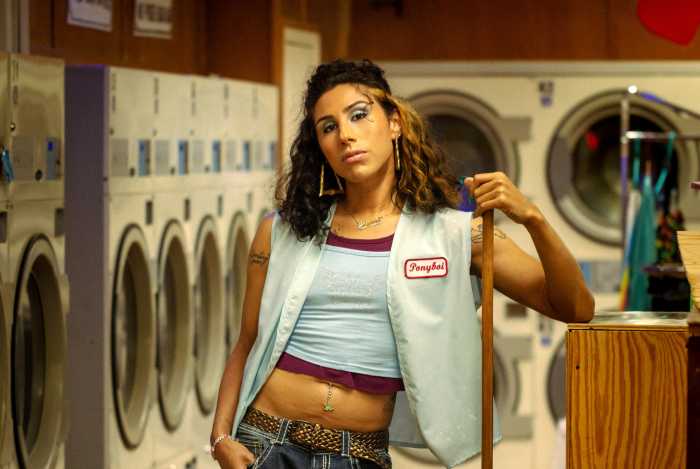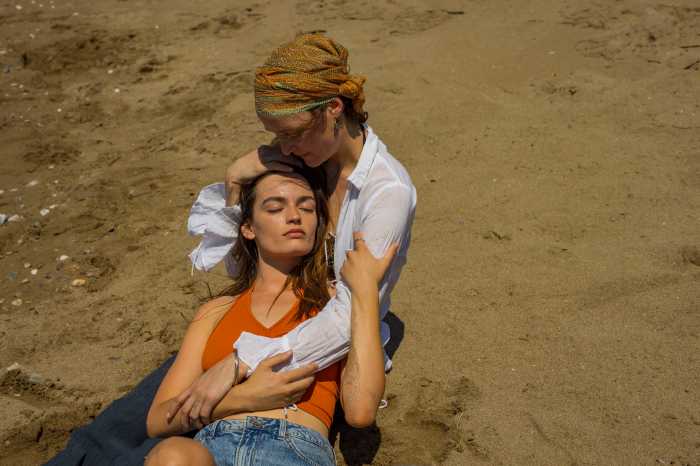Harold Edmond in Theo Anthony’s “Rat Film.” | MEMORY
BY STEVE ERICKSON | Theo Anthony’s “Rat Film” is the most original and unique documentary I’ve seen this year. It ties together two subjects that, at first, might not seem to have anything in common: rats and the history of segregation and institutional racism in Baltimore.
If it resembles any other film, it’s Errol Morris’ “Fast, Cheap & Out of Control,” but with the montage that ties together Morris’ treatment of disparate subjects removed. (“Rat Film” is just as carefully edited, but in a much different way.) Anthony has made a political film that never preaches or tells the audience what to think. It’s obvious that he’s anti-racist and has progressive politics, but beyond that his own views are kept implicit rather than explicit.
Anthony studied with Werner Herzog, whose influence can be felt here too, but “Rat Film” never evokes any specific Herzog film, just the German director’s wide-ranging span of interests and bemused attitude toward them.
Theo Anthony’s thought-provoking look at inequality in Baltimore
Michael Moore has long been a contentious figure, but to many people his work represents what liberal political documentaries should be. Perhaps the best possible version of a similar aesthetic can be found in Ava DuVernay’s “13th,” which lays out an argument about the racism of America’s prison system, uses all the considerable tools at the director’s command to convince the audience that she’s right, and doesn’t hesitate to create a two-minute montage attacking Donald Trump in the strongest possible terms. A friend of mine hated it, called it manipulative propaganda on the level of Fox News, and said, “Even though it’s liberal, it’s just as bad as the conservative version of tabloid discourse.” I think he would be far more pleased with “Rat Film.”
At the Q&A after I first saw it at the Film Society of Lincoln Center’s “Art of the Real” festival last spring, Anthony struck me as being one of the most self-critical filmmakers I’ve ever seen.
Anthony takes on the racist history of Baltimore in an intensely local film. In fact, the end credits proudly proclaim “made in Baltimore.” “Rat Film” kicks off with a creation myth about a rat nibbling its way through an egg and leading to the beginning of the world, told over footage of cars preparing to race. From there, it shows a wide variety of human and rodent activity, including rat exterminators. We learn that rats can only jump 32 inches, and therefore Baltimore trashcans are 34 inches high. Anthony also goes back in time to examine the history of attempts to control the rat population.
Simultaneously, he explores the roots of modern-day systemic racism: Baltimore has the unfortunate distinction of being the first city to enact legislation legally enforcing segregation, in 1910, six years before the Supreme Court made such government restrictions on private home sales illegal. However, after that ruling, landlords and banks conspired to keep African Americans ghettoized and poor anyway.
So what does all this have to do with rats? Anthony leaves it up to the audience to make the connections. He accompanied exterminator Harold Edmond on his rounds, letting him talk about subjects like the afterlife, and it’s notable that seemingly every human who deals with rats in Baltimore on a street level is African-American. One man says, “You’ll find rats where people have no dreams or resources.”
Despite Anthony’s interest in history, he doesn’t use a second of archival footage, relying on maps and texts instead. The vast majority of this film’s footage consists of scenes set in the present day. However, he also uses images from Google Maps and Google Earth, projecting computer views of Baltimore onto real people, with their faces wiped out. In addition to directing the film, Anthony also shot and edited it.
The problem with essay-based documentaries is that they can ramble into irrelevant or uninteresting territory, and there are moments when “Rat Film” is guilty of this. Although it runs less than 90 minutes, it still could have done without an extraneous section about crime scene simulations. But when it gets to the real connections between rats and humans, it reveals how African Americans have often been treated as disposable pests, too. Lest anyone assume this is the film’s obvious point, it’s way more subtle than that.
The original scientist who tried to control the rat population thought that humans had it too easy and expressed ideas that came dangerously close to eugenics. Rats and people are tied at the hip. Later scientists suggested that rats could only be controlled by improving human living conditions, but at the same time racist forces were setting out to make that impossible, as Anthony capably shows through his use of maps.
The director made a short in 2015 about the aftermath of the killing of Freddie Gray. Making a feature-length film that devotes so much time to rats might seem like an odd follow-up, but after you’ve seen “Rat Film,” it becomes totally logical.
RAT FILM | Directed by Theo Anthony | The Cinema Guild | Opens Sep. 15 | Film Society of Lincoln Center, Elinor Bunin Munroe Film Center, 144 W. 65th St. | filmlinc.org



































